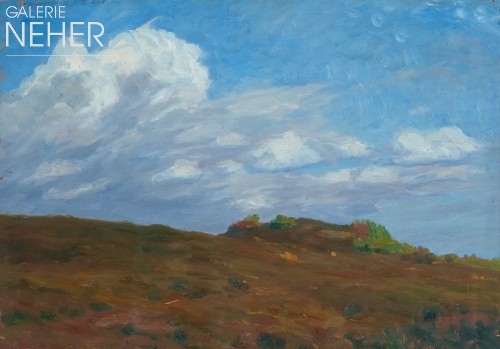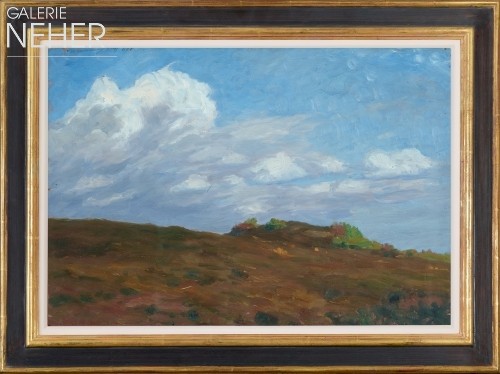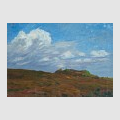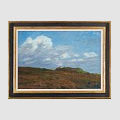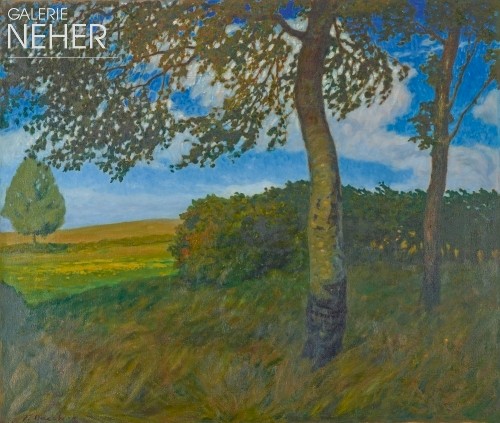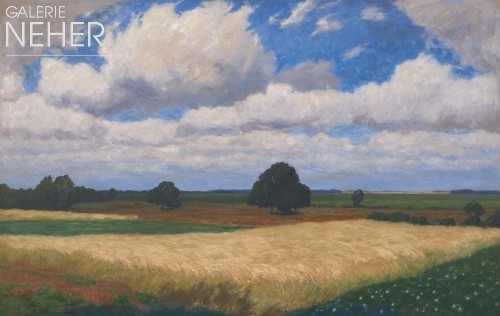About the work
Fritz Overbeck's name is inextricably linked to the Worpswede artists' colony. From 1894 until 1905, the landscape painter lived within the circle of friends and artist colleagues including Fritz Mackensen, Otto Modersohn, Hans am Ende and Heinrich Vogeler. During this period he painted fields and meadows, the island of Weyerberg und the Teufelsmoor, birch trees, peasants' cottages, moor canals and countless impressive cloud formations chasing across the sky high above the solitary natural environment. Instead of large-scale landscape compositions, he produced seemingly arbitrarily chosen details, rendered in the atmospheric hues of the pallid moonlight, the glowing twilight or rich autumnal tones.
Less familiar is the fact that from 1905 to 1909, he crafted some 100 paintings and around 400 oil studies, more than half of his entire oeuvre, after Overbeck had turned his back on Worpswede and moved, together with his family, to the village Brücken near Vegesack. Here too he dedicated himself to depicting the surrounding landscape, often venturing out into the natural environment armed with sketch book and palette.
The landscape "Large Cloud over the Heidehügel" from 1908 was created evidently whilst on a trip to the town of Lemwerder on the opposite banks of the Weser, which Overbeck would reach with the ferry. Once again the painter, who, in June of that same year, complained to Otto Modersohn about the lack of artistic inspiration in Bröcken and recalled nostalgically his time in Worpsweder, revisited the typical motifs of his earlier years there. Our gaze is directed onto a slight elevation whose crest is populated with bushes - an unspectacular natural feature, rich in brown, earthy hues, and viewed from below. Towering above is a close-up of the sky with numerous clouds sweeping across the landscape. So frequently did they feature as the painter's dominant motif that the "Overbeck cloud" became the hallmark of his painterly output. Rainer Maria Rilke described them as "tangible and large 'cloud villages'", and the artist himself commented in the journal "Die Kunst" from 1895: "What good would our straw huts, birch avenues and moor canals be without the sky, which ennobles even the most inconsequential object and lends them ineffable coloristic charm. […]."
(Doris Hansmann)
Text authored and provided by Dr. Doris Hansmann, Art historian
Studies of art history, theater, film and television, English and Romance Languages at the University of Cologne, doctorated in 1994. Research assistant at the Art Museum Düsseldorf. Lecturer and project manager at Wienand Verlag, Cologne. Freelance work as an author, editor and book producer for publishers and museums in Germany and abroad. From 2011 chief editor at Wienand Verlag, from 2019 to 2021 senior editor at DCV, Dr. Cantz’sche Verlagsgesellschaft, Berlin. Numerous publications on the art of the 20th and 21st centuries.
